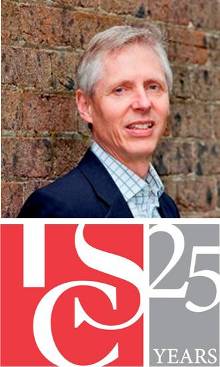- Community engagement, i.e. ensuring that your local community is closely involved with the museum, both within and without
- Innovative and unexpected exhibitions – exhibitions that offer fresh perspectives
- Doing things well – maintaining high standards in everything from museum design to cleanliness of toilets
- A strong corporate culture
- A social space, namely a museum where people feel welcome and want to return to, where they are happy to meet their friends
New Zealand consistently out guns Australia with its visitor numbers, with Te Papa in Wellington the most visited museum in Australasia at a cool 1.5 million last year. And the Otago Museum is no exception with an amazing 600,000 during a special exhibition year in 2008-09 but still in a regular year over 400,000. This is in a city with a population of only 120,000 and not much more in the local rural catchment area. Compare that with the Powerhouse Museum in Sydney (population currently 4.2 million) on 470,000 visitors in 2009-10.
Has this achievement come from following these criteria for successful museums?
Let’s check it out:
- Community engagement. The Otago Museum has a complicated governance model being essentially a regional museum with funding from a number of local councils. Each of these has to be kept happy as rate payers monies are being channelled to the Museum . Last year the Museum was Winner of the Otago Chamber of Commerce Business Excellence Award for Tourism, reached out into communities in Otago with a SciCity based outreach programme, and ran Halloween guided tours round the Museum alongside a fortnightly series of live performances from kapa haka to Irish dancing. It’s noticeable that the museum guides are called communicators in the staff list, reflecting the importance the Museum sees in their role in this area with the community.
- Doing things well. The Director did tell me they have discovered a number of people come to the Museum only to use the toilets so that part of the criteria is being achieved! But the Museum does present well with succinct signage, solid looking interactives and clear labelling.
- Innovative and unexpected exhibitions. Two particular exhibitions caught my eye. One was a series of mini exhibitions in the foyer as a ’taster’ to the permanent exhibitions , being no more than a large showcase of, in turn, Indian ornate daggers, Macedonian pottery and Sir Edmund Hillary’s personal memorabilia. These change every two or three months. The other was a completely unexpected delight, namely a rainforest exhibition which morphed into a Butterfly gallery with live butterflies. Spectacular and a real draw card for repeat visitors, as the butterflies only last a few days so are constantly changing.
- A strong corporate culture. This is where the Museum really does excel – you can feel it in the place just chatting to staff. And they have done this by creating a Strategic Plan into which all staff contributed during an intensive bonding session away from the Museum, and then more importantly actually sticking to what the Plan says they were going to do. Indicative of this is that in the staffroom there is a list of “behaviours we need and respect” and “ behaviours we will not tolerate”. Check out the Plan on their website, where these are listed – it is well worth a read.
- A social space. The entrance was redeveloped to reorientate the face of the Museum from a busy road to the local park a few years ago and the result is an airy glass walled atrium which is inviting and full of buzz and people. The café is in this space, and the coffee was excellent – such an important part of museum visitation if people are going to be encouraged to return. Indicative of this, the Director was himself checking out the coffee as a new barista had started the day I was there.
Julian Bickersteth
Managing Director
internationalconservationservices









